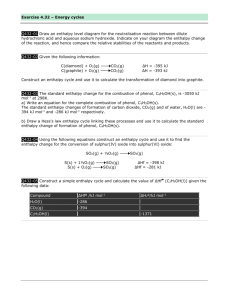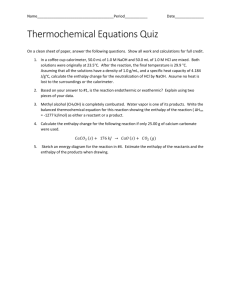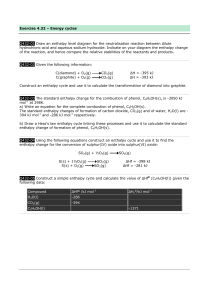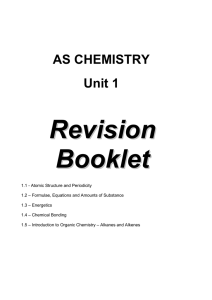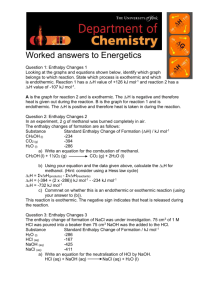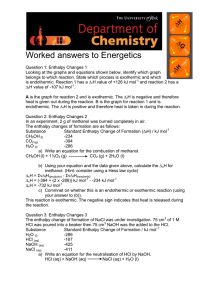Energetics questions (MS Word , 652kb)
advertisement
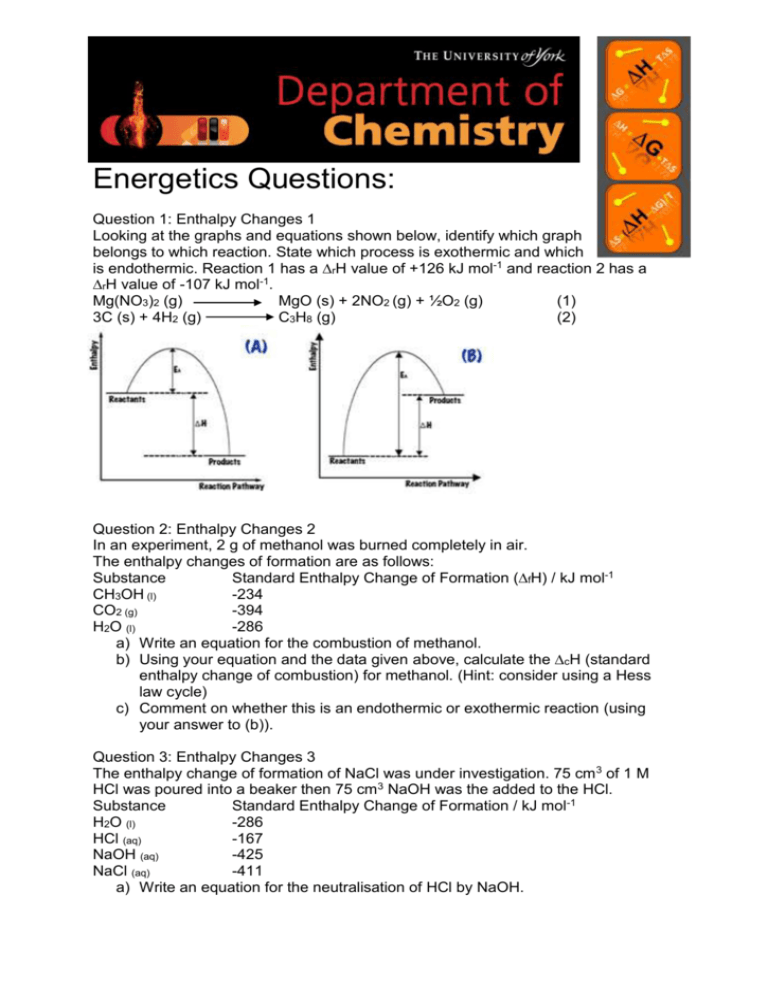
Energetics Questions: Question 1: Enthalpy Changes 1 Looking at the graphs and equations shown below, identify which graph belongs to which reaction. State which process is exothermic and which is endothermic. Reaction 1 has a ∆rH value of +126 kJ mol-1 and reaction 2 has a ∆rH value of -107 kJ mol-1. Mg(NO3)2 (g) MgO (s) + 2NO2 (g) + ½O2 (g) (1) 3C (s) + 4H2 (g) C3H8 (g) (2) Question 2: Enthalpy Changes 2 In an experiment, 2 g of methanol was burned completely in air. The enthalpy changes of formation are as follows: Substance Standard Enthalpy Change of Formation (∆fH) / kJ mol-1 CH3OH (l) -234 CO2 (g) -394 H2O (l) -286 a) Write an equation for the combustion of methanol. b) Using your equation and the data given above, calculate the ∆cH (standard enthalpy change of combustion) for methanol. (Hint: consider using a Hess law cycle) c) Comment on whether this is an endothermic or exothermic reaction (using your answer to (b)). Question 3: Enthalpy Changes 3 The enthalpy change of formation of NaCl was under investigation. 75 cm 3 of 1 M HCl was poured into a beaker then 75 cm3 NaOH was the added to the HCl. Substance Standard Enthalpy Change of Formation / kJ mol-1 H2O (l) -286 HCl (aq) -167 NaOH (aq) -425 NaCl (aq) -411 a) Write an equation for the neutralisation of HCl by NaOH. b) Using your equation and the data given above, calculate the ∆ rH of this reaction. (Hint: draw an Hess cycle) c) Comment on the sign of the value calculated in part (b). Question 4: Bond Enthalpy C3H8 + 5O2 3CO2 + 4H2O Bond C–H C–C O=O C=O O–H Mean Bond enthalpy / kJ mol-1 +413 +347 +498 +743 +464 a) Using the bond enthalpies and the equation shown above, calculate the ∆H for the combustion of pentane. b) Draw an energy diagram for the forward reaction (like the diagrams in question 1), labelling the reactants, products, ∆H and stating whether it is an exothermic or endothermic reaction. Question 5: Mole calculations 1 a) How many moles are there in 3.75 g of benzene? b) If 3.75 g of benzene was dissolved in water such that the total volume was 150 cm3, what would the resulting concentration be? Question 6: Concentration Calculations a) 15 g of propan-1-ol was added to 15 cm3 of H2O. Given that the density of propan-1-ol is 0.804 g cm-3 calculate the volume of propan-1-ol added to the solution and hence the total volume of the resulting solution. b) Using your answer from part (a), calculate the number of moles of propan-1-ol in the solution. c) Calculate the concentration of the resulting solution in mol dm-3. Question 7: Mole Calculations 3 60 cm3 of 2.3 M NaOH was added to 300 cm3 of H2O making solution A. 25 cm3 of solution A was removed by pipette and added to 40 cm3 of H2O in a different beaker making solution B. a) Calculate the concentration of NaOH in solution A. b) Calculate the resulting concentration of solution B after pipetting.



